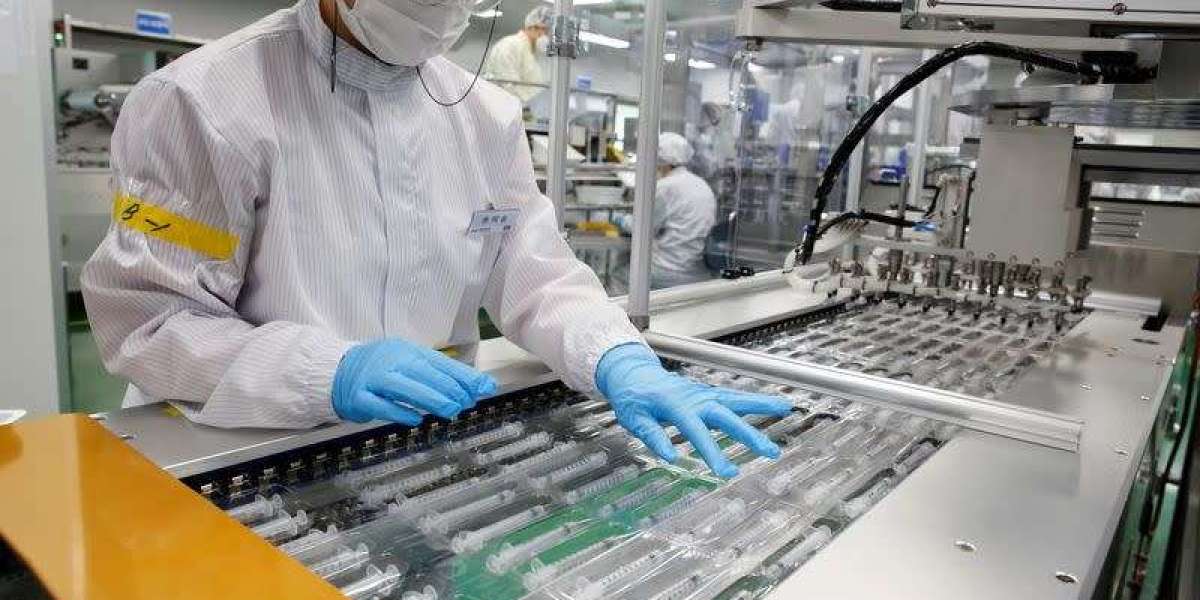The global healthcare industry has witnessed significant advancements in medical devices over the past few decades, with single-use syringes playing a pivotal role in the delivery of vaccines, insulin, biologics, and other essential treatments. However, as the demand for syringes continues to rise, so does the environmental impact of their widespread use. This has created a growing need for innovation in the single-use syringe market, particularly around sustainability. In this article, we explore how sustainability is playing a crucial role in shaping the future of syringe technologies, encouraging manufacturers to adopt eco-friendly practices and innovative solutions.
The Environmental Challenges of Single-Use Syringes
Single-use syringes are designed for one-time use and disposal after each injection or medical procedure. This means that millions of syringes are discarded globally every day, creating a massive environmental challenge. Most single-use syringes are made from plastics, including polypropylene and polyethylene, which take hundreds of years to decompose in landfills. Furthermore, these syringes are often not recyclable due to contamination risk from blood, medications, or other biological substances.
The rising volume of medical waste is a significant concern for healthcare systems and environmental advocates. As the medical industry strives to meet increasing demand, it is essential to address the growing issue of syringe waste, which contributes to plastic pollution and strains waste management systems.
The Role of Sustainability in Shaping Syringe Innovation
Sustainability has become a key focus for manufacturers in the single-use syringe market, driven by consumer demand for eco-friendly solutions, stricter environmental regulations, and the healthcare industry's increasing focus on reducing its carbon footprint. Several innovations are emerging that aim to reduce the environmental impact of single-use syringes while maintaining their essential medical functions, such as sterility and safety.
1. Biodegradable Materials in Syringe Production
One of the most promising innovations in the single-use syringe market is the development of biodegradable syringes. These syringes are made from materials that decompose naturally over time, unlike traditional plastic syringes, which persist in the environment for centuries. Some manufacturers are experimenting with plant-based plastics, biopolymers, and compostable materials to create syringes that can break down more quickly after disposal.
These biodegradable alternatives not only reduce the long-term environmental impact but also minimize the demand for non-renewable resources used in conventional plastic production. Although biodegradable syringes are still in the early stages of commercialization, the growing interest in sustainability is driving the research and development of these eco-friendly materials.
2. Recyclable Syringe Designs
Another avenue of innovation in the single-use syringe market involves designing syringes that are easier to recycle. Traditional syringes are often difficult to recycle due to the mix of materials used, including plastic, rubber, and metal, and the contamination risks from medical substances. However, manufacturers are exploring the use of single-material syringes that are entirely recyclable, allowing for easier sorting and processing in recycling facilities.
Moreover, advancements in smart syringe designs are enabling better separation of materials, which makes it easier to recycle the individual components. These innovations not only help reduce waste but also create a more sustainable life cycle for syringes and other medical devices.
3. Energy-Efficient Manufacturing Processes
Manufacturing is a critical component of the single-use syringe market, and the environmental footprint of production processes plays a significant role in the overall sustainability of syringes. The production of syringes typically involves high energy consumption, primarily due to the need for molding, sterilization, and packaging.
To address these challenges, manufacturers are exploring ways to reduce energy consumption in syringe production. This includes the use of energy-efficient machinery, renewable energy sources, and more streamlined production processes. By adopting these measures, syringe manufacturers can minimize the carbon footprint of their operations, contributing to a more sustainable and eco-friendly healthcare industry.
4. Sustainable Packaging Solutions
In addition to the syringes themselves, the packaging used for single-use syringes is another critical area for sustainability innovation. Traditional syringe packaging often involves the use of plastic and other non-recyclable materials, further contributing to medical waste.
To address this, manufacturers are exploring alternative sustainable packaging solutions, such as biodegradable films, recycled paperboard, and compostable materials. These packaging options reduce the environmental burden of syringe waste, making it easier to adopt more sustainable practices across the entire syringe supply chain.
5. Circular Economy Approaches in Syringe Manufacturing
The concept of a circular economy is gaining traction within the single-use syringe market as an alternative to the traditional linear model of production, consumption, and disposal. A circular economy focuses on reducing waste and promoting the reuse and recycling of materials.
Syringe manufacturers are exploring ways to incorporate circular economy principles into their production processes, such as take-back schemes where used syringes can be returned to manufacturers for recycling or repurposing. This model reduces the environmental impact of syringe disposal and helps conserve resources by reusing valuable materials.
Challenges in Achieving Sustainability in Syringe Manufacturing
While there is significant potential for sustainable innovation in the single-use syringe market, there are several challenges that manufacturers must overcome. The most significant challenges include:
1. Regulatory Compliance
Syringes are medical devices, and their design and production must comply with stringent regulatory standards for safety, sterility, and efficacy. These regulations often restrict the types of materials and technologies that can be used in syringe manufacturing. For example, biodegradable materials or new polymers may not yet meet the necessary safety standards required for medical devices, making it difficult to introduce them into the market on a large scale.
2. Cost Considerations
Sustainability often comes at a higher cost. Biodegradable materials, recyclable designs, and energy-efficient manufacturing processes can be more expensive than traditional plastic production methods. Given that syringes are typically low-cost items, the price increase associated with these sustainable innovations may be a barrier for adoption, especially in price-sensitive markets or low-resource regions.
3. Balancing Safety with Sustainability
In the healthcare industry, safety is paramount. Any change in syringe design or materials must not compromise the sterility, effectiveness, or safety of the device. Innovations such as biodegradable syringes or alternative materials must be thoroughly tested to ensure they meet the necessary medical standards. Striking the right balance between environmental sustainability and patient safety is crucial in shaping the future of syringe technologies.
The Future of Sustainable Syringe Technologies
As demand for more sustainable solutions grows across all industries, the single-use syringe market is positioned at the forefront of innovation. The increasing focus on eco-friendly manufacturing practices, biodegradable materials, and recyclable syringe designs is setting the stage for a more sustainable future in the healthcare sector.
Moreover, advancements in smart syringe technologies, energy-efficient production, and sustainable packaging are likely to play a critical role in shaping the next generation of syringes. Collaboration between manufacturers, regulatory bodies, and environmental organizations will be key to ensuring that sustainability does not compromise safety and performance.
Ultimately, the single-use syringe market is embracing sustainability as a driving force for innovation. As new materials and technologies emerge, the industry will continue to evolve, paving the way for more sustainable syringe technologies that reduce environmental impact and help create a greener, more efficient healthcare system.
Conclusion
The role of sustainability in shaping the future of single-use syringe technologies is becoming increasingly significant. Innovations aimed at reducing the environmental impact of syringes, such as biodegradable materials, recyclable designs, and energy-efficient production processes, are driving the industry toward a more sustainable future. While challenges remain, the push for sustainability in the syringe market is a positive step towards reducing medical waste and ensuring a healthier planet. As the demand for eco-friendly solutions continues to grow, manufacturers will need to continue innovating to meet the evolving needs of both healthcare and the environment.








